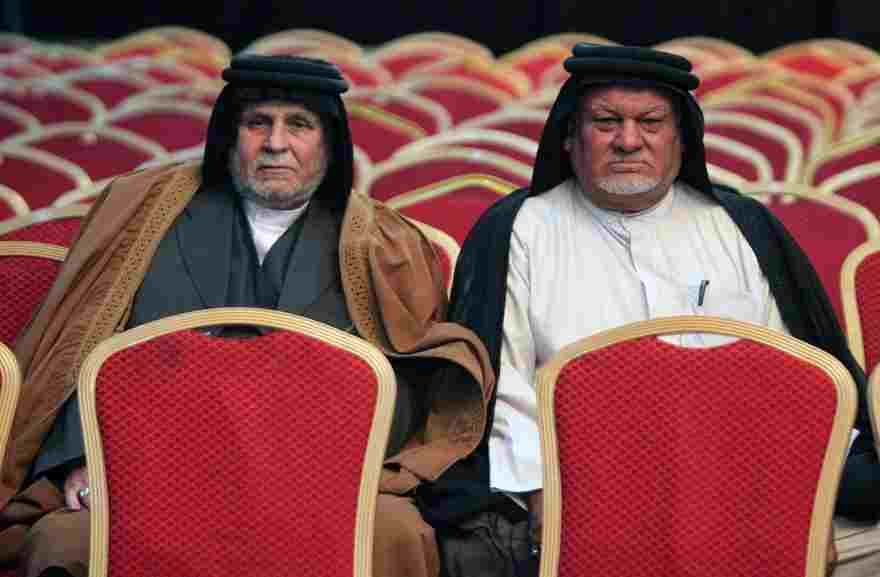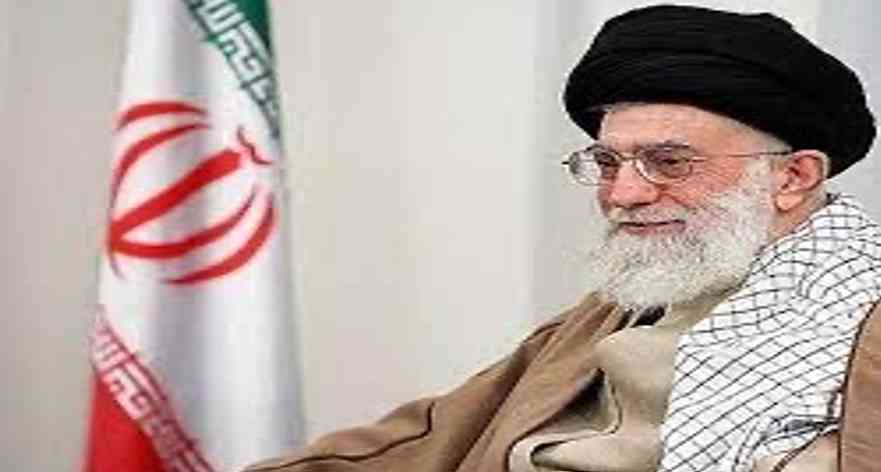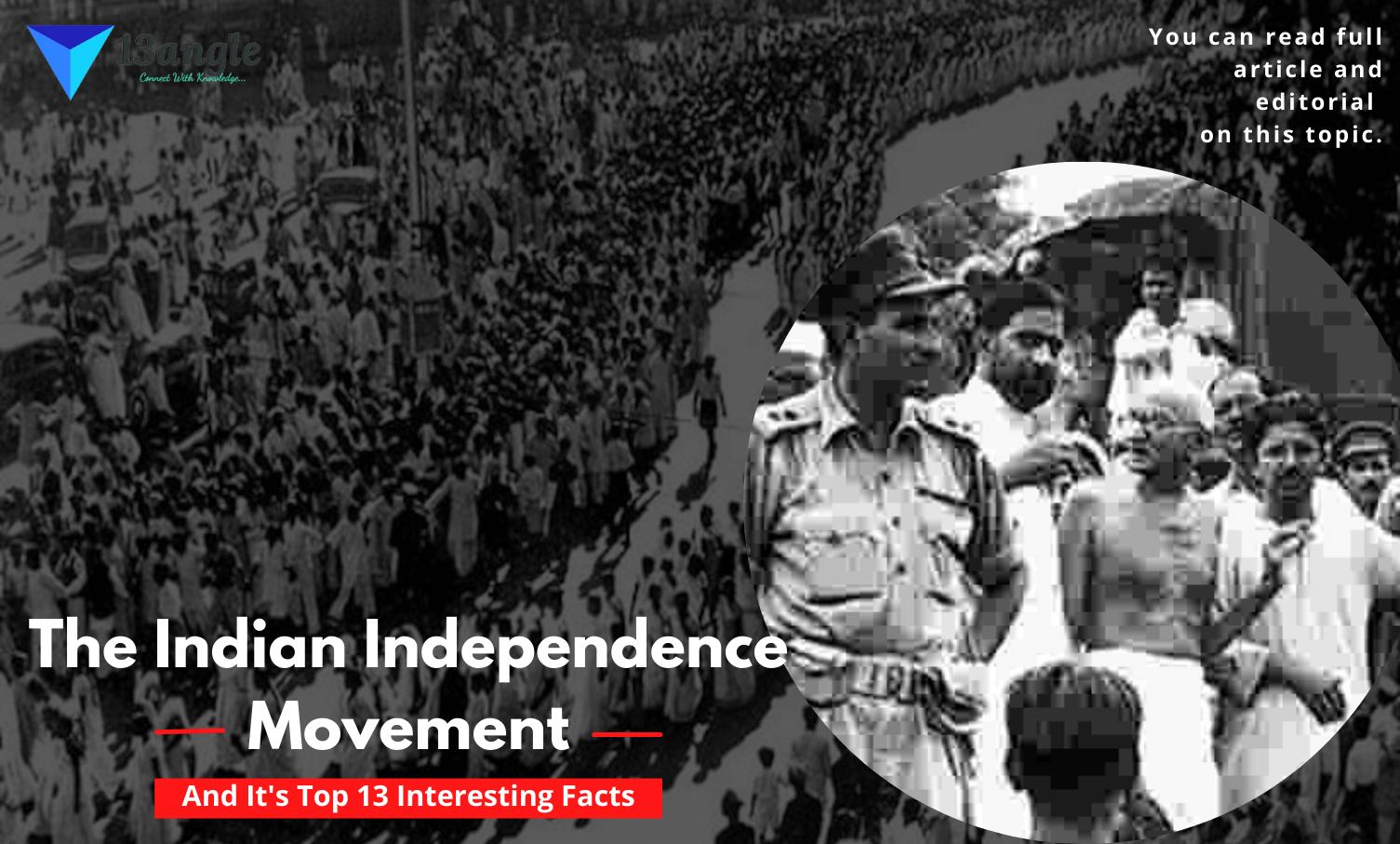
Introduction- Islam As A Religion
Islam, one of the world’s three major monotheistic religions, teaches the oneness of God (Allah), who has revealed his message through a succession of prophets through Jesus and finally through Muhammad. “Muslim” is the adjective that describes people who believe in Islam and various aspects of the faith and its practices. The primary religious text of Islam is the Qur’an (Koran), the collected revelations of God’s message to humanity, delivered by the Angel Gabriel to Muhammad over a period of several years.
Muhammad is born in Mecca. He comes from a noble family and is well-known for his honesty and upright character. According to Muslim belief, at the age of 40, Muhammad is visited by the angel Gabriel while on retreat in a cave near Mecca. The angel recites to him the first revelations of the Quran and informs him that he is God’s prophet. Later, Muhammad is told to call his people to worship the one God, but they react with hostility and begin to persecute him and his followers.
After enduring persecution in Mecca, Muhammad and his followers migrated to the nearby town of Yathrib (later to be known as Medina), where the people there accepted Islam. This marks the “hijrah” or “emigration,” and the beginning of the Islamic calendar. In Medina, Muhammad establishes an Islamic state based on the laws revealed in the Quran and the inspired guidance coming to him from God. Eventually, he begins to invite other tribes and nations to Islam.
Muhammad returns to Mecca with a large number of his followers. He enters the city peacefully, and eventually, all its citizens accept Islam. The prophet clears the idols and images out of the Kaaba and rededicates it to the worship of God alone.
Because Muslims believe that God chose Muhammad above all other people to be God’s final messenger to humanity, Muhammad is sometimes described as the “perfect man”, so Muslims take his behavior and views as guidance.
Scholars often list five specific expectations that Muslims should fulfill, which they call the “Five Pillars”. These are:
- the confession of faith, known in Arabic as the shahada,
- prayers five times a day, at daybreak, noon, afternoon, after sunset, and early evening, to honor God;
- fasting between sunrise and sunset in the month of Ramadan, the month in which the Qur’an was initially revealed to Muhammad, as well as a general effort to avoid immoral or unkind behaviour;
- pilgrimage to Mecca (in modern Saudi Arabia), or hajj, at least once in a lifetime if financially and physically possible; and
- donation of one-fortieth of annual income for charitable purposes, in addition to voluntary donations that might be given throughout the year.
- There are no priests in Islam, but there are many religious professionals, known as ‘ulama, who interpret tenets of faith and matters of practice through careful study of the Qur’an and the hadith in light of other religious scholars’ writings and commentaries.
Battle For Islam

Even though Islam is followed by over 1.97 billion people in the world, the establishment of the religion took years of battles and struggles by the Prophet. The Middle East and parts of Northern Africa, Arabia were inhabited by several tribal groups each with their distinct culture, dialect, and traditions. There were constant conflicts between these groups for power and to establish their supremacy. There was no unity and trading was difficult due to their differences.
It took Prophet Muhammad to go on an expedition and wage several holy wars to establish a single unified religion, Islam.
Accounts of the establishment of the Islamic state are provided by Al-Baladhuri, a 9th-century historian who wrote about this. He studied at Baghdad Muslim Empire and was a favored visitor at the Imperial Court of Abadis Caliphate. Baladhuri reconstructed the history of the beginning of the Islamic empire right from the time of Muhammad.
Muhammad preached monotheism. He belonged to the Northern tribe of Arabs known as the Quraysh tribe. The Northern nomads were mostly nomads and were known as the ‘Bedouins’. On the other hand, the Southern Arab tribes had a sedentary lifestyle. Before Muhammad, the people of his tribe worshipped a religion called the Pegan religion.
The tribes strictly opposed Muhammad’s ideas of monotheism and as a result, he was forced to leave Mecca. He went to Medina in 620 AD. This is known as ‘Hijra” (immigration).
Medina at that time was a place of anarchy, and it became an ideal place for Muhammad to preach monotheism. The people thought he could settle the dispute, so they gave protection and shelter to Muhammad. The people who accompanied him came to be known as Muhajiira. The people who supported Muhammad in Medina came to be known as the Ansars. So, Muhammad created a political-religious base in Medina with an army, taxation, and administration. The country came to be known as Umah and all members had to pay a tax called Zakt which ensured their membership in the community.
The tribes of the Quraysh clan posed a serious threat to the political-religious system of Muhammad. A number of armed battles had taken place and through prolonged diplomacy, Muhammad could establish his control in Mecca in 638 AD.
Median was located on the busy route going through Hejaz and several Quraysh caravans used to pass through that route and these caravans were attacked by Muhammad’s men for booty. Muhammad defeated a large force in the Battle of Badr in 624 AD.
Finally, Muhammad made a truce with the Meccans in 627 AD.
Muhammad died in 632 AD. During his death, he clearly claimed that there he was the last Prophet (messenger) of Allah.
However, even after his death, there was instability and there arose a pressing need for strong leadership. Two distinct groups were formed who claimed them to be the rightful successors of Muhammad. This divide started the onset of the Shia-Sunni conflict.
The Divide Between Shia And Sunni
By the time of his death in 632, Mohammed had consolidated power in Arabia. His followers subsequently built an empire that would stretch from Central Asia to Spain less than a century after his death. But a debate over succession split the community, with some arguing that leadership should be awarded to qualified individuals and others insisting that the only legitimate ruler must come through Mohammed’s bloodline.
A group of prominent early followers of Islam elected Abu Bakr, a companion of Muhammad, to be the first caliph, or leader of the Islamic community, over the objections of those who favored Ali ibn Abi Talib, Mohammed’s cousin, and son-in-law.
The opposing camps in the succession debate eventually evolved into Islam’s two main sects. Shias, a term that stems from Shia Ali, believes that Ali and his descendants are part of a divine order. Sunnis, meaning followers of the Sunna, or “way” in Arabic, of Muhammad, are opposed to political succession based on Muhammad’s bloodline.
Ali became caliph in 656 AD and ruled only five years before he was assassinated. The caliphate, which was based in the Arabian Peninsula, passed to the Umayyad dynasty in Damascus and later the Abbasids in Baghdad. The Shias rejected the authority of these rulers. In 680 AD, soldiers of the second Umayyad caliph killed Ali’s son, Husayn, and many of his companions in Karbala, located in modern-day Iraq. Karbala became a defining moral story for Shias, and Sunni caliphs worried that the Shia Imams; the descendants of Husayn who were seen as the legitimate leaders of Muslims would use this massacre to capture the public imagination and topple monarchs. This fear resulted in further persecution and marginalization of the Shias.
Even as Sunnis triumphed politically in the Muslim world, Shias continued to look to the Imams (the blood descendants of Ali and Husayn) as their legitimate political and religious leaders. Even within the Shia community, however, there arose differences over the proper line of succession. Mainstream Shias believe there were twelve Imams. Ismaili Shias, centered in South Asia but with important diaspora communities throughout the world, broke off at the seventh Imam. Most Ismailis revere the Aga Khan as the living representative of their Imam. The majority of Shias, particularly those in Iran and the eastern Arab world, believe that the twelfth Imam entered a state of occultation, or hiddenness, in 939 and that he will return at the end of time. Since then, “Twelvers,” or Ithna Ashari Shias, have vested religious authority in their senior clerical leaders, called ayatollahs (Arabic for “sign of God”).
People of other religions who converted to Islam influenced the evolution of Shia Islam as distinct from Sunni Islam in rituals and beliefs in the further years to come.
Sunnis dominated the first nine centuries of Islamic rule (excluding the Shia Fatimid dynasty) until the Safavid dynasty was established in Persia in 1501. The Safavids made Shia Islam the state religion.
They fought with the Ottomans, the seat of the Sunni caliphate. As these empires faded, their battles roughly settled the political borders of modern Iran and Turkey by the seventeenth century, and their legacies resulted in the current demographic distribution of Islam’s sects.
Shias comprise a majority in Iran, Iraq, Azerbaijan, and Bahrain, and a plurality in Lebanon, while Sunnis make up the majority of more than forty countries from Morocco to Indonesia.
Evolution Through The Ages

Sunni and Shia Muslims agree on the basic principles of Islam, such as believing in one god, the importance of the prophets, the angels, and the day of judgment, and sharing the same holy book- ‘the Al-Quran’. The main difference between the Sunni and Shia beliefs is the question of Imamah or leadership. This relates to disagreements that arose among Muslims immediately after the death of the prophet Muhammad. The disagreements centered just on the issue of who should be the next leader. Traditionally, that dispute has not been solved yet, and, today, Sunni and Shia Muslims recognize different leaders as the successors of the Prophet Muhammad.
Shia Muslims- In early Islamic history, ‘Shiat-Ali’ or the ‘Party of Ali’, literally was a movement. Members of the Shia faction claimed that Ali was the rightful successor to the Prophet Muhammad as an ‘Imam’ or leader of the Muslim community after his death in 632 AD. In fact, the prophet’s closest companion, Abu Bakr was chosen as the first Caliph or leader of Islam and was followed by Omar-ibn-Khattab-the second Caliph after his death, Osman (RA) became the third Caliph of Islam. Osman was also assassinated in 661 AD. Ali became the fourth caliph of Islam. After Ali’s assassination, Ali’s sons, Hassan and Hussein were denied their legitimate right of accession to the Caliphate. Muwabiah, the first Caliph of the Sunni Umayyad dynasty, poisoned Hassan and in the following year, also killed Hussein in a battle in Karbala, where Hussein was deceived and trapped by the Governor of Kufa under instructions from Yazid1 of Damascus. Immediately after the killings of Hussein and his male companions in Karbala, Muwabiyyah in Damascus declared his son Yazid1 as the new Caliph of Islam.
Both sects have subdivisions. The divisions among Shias were discussed above. Four schools comprise Sunni jurisprudence: Hanafi, Shafii, Maliki, and Hanbali, the latter spawning the Wahhabi and Salafi movements in Saudi Arabia. Sunnism, a broad umbrella term for non-Shia Islam, is united on the importance of the Quran and the practice of Mohammed but allows for differences in legal opinion.
Sectarianism Politics And Its Impact On The Global Affairs

The schism in Islam has led to several conflicts and post-modern conflicts in the Islamic world and beyond. Iran’s Islamic Revolution in 1979 gave Shia cleric Ayatollah Ruhollah Khomeini the opportunity to implement his vision for an Islamic government ruled by the “guardianship of the jurist” (velayat-e faqih), a controversial concept among Shia scholars that is opposed by Sunnis, who have historically differentiated between political leadership and religious scholarship.
Under Khomeini, Iran began an experiment in Islamic rule. Khomeini tried to inspire further Islamic revival, preaching Muslim unity, but supported groups in Lebanon, Iraq, Afghanistan, Bahrain, and Pakistan that had specific Shia agendas. Sunni Islamists did not approve of his success.
The transformation of Iran into an overtly Shia power after the Islamic revolution induced Saudi Arabia to accelerate the propagation of Wahhabism, as both countries revived a centuries-old sectarian rivalry over the true interpretation of Islam. Many of the groups responsible for sectarian violence that has occurred in the region and across the Muslim world since 1979 can be traced to Saudi and Iranian sources.
Saudi Arabia backed Iraq in the 1980–1988 war with Iran and sponsored militants in Pakistan and Afghanistan who were primarily fighting against the Soviet Union, which had invaded Afghanistan in 1979 but was also suppressing Shia movements inspired or backed by Iran.
The transformation of Iran into an agitator for Shia movements in Muslim countries seemed to confirm centuries of Sunni suspicions that Shia Arabs answer to Persia. The Houthis, a Zaydi Shia militant group in Yemen, battled the government of Ali Abdullah Saleh, a Zaydi, several times between 2004 and 2010. Then, in 2014, the Houthis captured the capital Sana’a with ousted president Saleh’s support.
In Popular Media
The divide in Islam has overtly and comely led to the portrayal in media, books, and print. Some to reflect, some to reconcile and come to widen the difference between the sects.
A popular Turkish mega-series, The Magnificent Century is the story of Sultan Suleyeman, the longest-reigning ruler of the Ottoman Empire. Although the show majorly showed Ottoman rule, there were grave parts where it showed their deep hatred and detestment for the Safavid Dynasty of Iraq. The simple reason was that the Ottomans were Sunnis and the Safavids were Shias. Their conflict was a long-drawn one over the control of Mesopotamia.
Conclusion
Despite their differences, Sunnis and Shias have lived alongside each other peacefully for most of history. But towards the late 20th century, the division deepened, and violence erupted in many parts of the Middle East as Sunni and Shia’s extremists battled for religious and political supremacy as well. In fact, three key milestones have sharpened Sunni and Shia divisions during the first two decades of the 21st century.
First of all, the rise of the Safavid dynasty in the 16th century. This had transferred Iran from a Sunni center into the Shia stronghold of the Middle East.
Secondly, in the early 20th century, immediately after World War 1, the victorious allies divided the Ottoman empire into various independent states.
Third and finally in 1979, the win of the Islamic Revolution in Iran, produced a radical brand of ‘Shia Islam’ that is in clashed violently with the Sunni conservatives in Saudi Arabia and elsewhere.
A common thread in most of these conflicts is the ongoing battle between Sunni Saudi Arabia and Shia Iran for influence in the Middle East and its surrounding regions. In fact, their struggles may have less to do with religion than with power and wealth. It is apparent that, despite the long-running nature of the Sunni and Shia divide, the two sects co-existed in relative peace for many centuries. This supports the fact that ‘religion’ is not the key factor in their divisions-rather economy and politics are to be blamed for that.
Top 13 Facts About Shia-Sunni Conflict
Sunni and Shia have lived together throughout Islamic history. Today, it may seem that the two groups live in geographically distinct places, but the two groups have lived together since the Sunni and Shia have been in theological dialogue from the beginning.
There are many historical debates between theologians of both groups. Sunni and Shia study each other’s theologians and scholars and many are important for both Sunni and Sunni.
Intra-faith marriage is not prohibited. Neither Sunni nor Shia Sharia (law) recognizes denomination to be an impediment to marriage.
They have diversity within each denomination. Neither Sunni nor Shia is reducible to a single and fixed ideology. Narratives that treat either Sunni or Shia as if they are a single entity are misleading and wrong. There has been and still exists great diversity within each group. There are rationalists and literalists within both Sunni and Shia Islam.
There has always been a call for union and solidarity from both sides. The division between the two main denominations occurred early on.
In Iran, a country with a population of about 77 million, it is thought that as much as 95 percent of the Muslim population might be Shiite, meaning that more than a third of the global Shiite population may live in the country.
The separation of Sunni and Shia is as old as Islam.
They suggest two interpretations of the same faith. Sunni and Shia believe in the same God; recite the same holy book, The Quran; confess belief in the same Prophet, Muhammad. would take pages to list all the things these two have in common, but the list of fundamental differences has only two points.
The majority of Syria is Sunni, yet Syrian President Bashar al-Assad and his late father were members of the Shia Alawite sect. The Bahraini leadership is Sunni, but the majority of the Bahraini citizens are Shia.
Shiites and Sunnis pray differently: Sunnis cross their arms, while Shiites keep their arms by their sides.
Sunnis observe five daily prayer sessions; Shiites condense the five prayers into three sessions.
Shiites are governed by more hierarchical structures, following living religious leaders. But Sunnis typically follow scholarly texts penned by past religious leaders.
Sunnis greatly outnumber Shiites, constituting nearly 90% of the global community of Muslims.






